#erp implementation
Text
Best cloud ERP software in Saudi Arabia
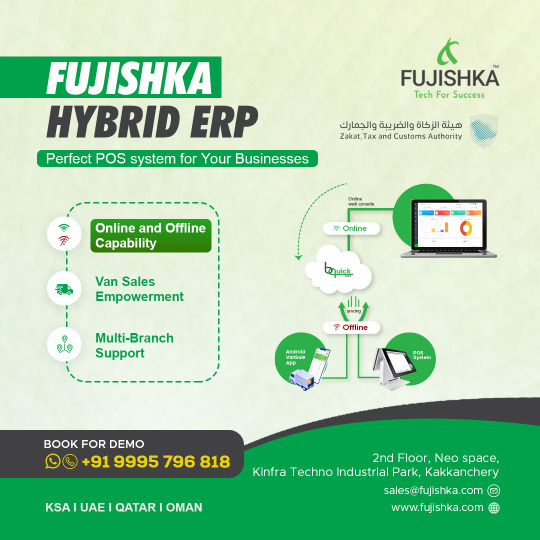
Best Cloud ERP in Saudi Arabia And Middle East
Fujishka Solutions is The best Hybrid ERP solutions
More Info: https://fujishka.com/
#erp systems#erp software uae#erp solution#erp implementation#ERP saudi arabia#saudi arabia#middle east#erp gcc
2 notes
·
View notes
Text
#odooimplementation#odoointegration#odoocustomization#erp implementation#odoo services#odoo#erp software solutions#odoodevelopment#erp solution#development#software#erpandcrmdevelopment
1 note
·
View note
Text
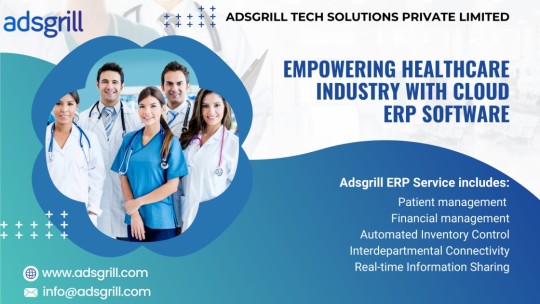
The healthcare industry plays an important role in society by offering people access to crucial medical services. These industries face several challenges that affect the healthcare industry’s capability to deliver cost-effective and efficient care. These problems, which range from regulatory difficulties to technological improvements, can have a significant impact on how healthcare is delivered and patient outcomes.
A good ERP solution unites all of the diverse parts of a complex healthcare organisation under a single roof. Each component is meant to work in tandem with the others, giving carers unrestricted access to all data across the organisation. Data can be shared across patient, pharmacy and clinician systems, as well as back-office administrative, personnel, and financial systems, allowing for better cost tracking and resource management.
#erp software#erp implementation#erp#healthcare#erp for small business#hospital erp software in saudi arabia
2 notes
·
View notes
Text
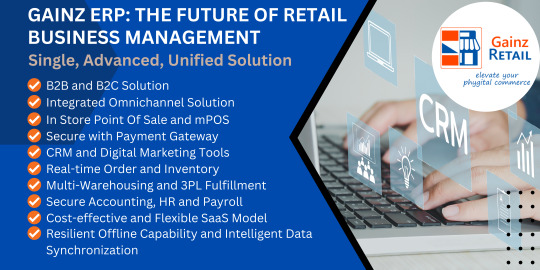
Gainz Retail ERP : The Future of Retail Business Management
We designed Gainz Retail ERP as an easy- to-use, retail business solution for in-store and online shopping.
Gainz Retail eliminates the hassle of maintaining multiple software for: POS - E-commerce - Accounting - Timesheet & Payroll
Let's show you how Gainz Retail ERP can manage your business with a single, advanced, unified solution.
for more details visit - https://www.odata.com/
#cloud erp#erp for small business#erp implementation#erp software#erpdevelopment#erpcompany#erp#erpsolutions#canada#sap erp#saas technology#saas application development#saascompany#saas software#saas app development company#retail pos software#retail store#retail business#retail erp software
2 notes
·
View notes
Text
Building an ERP System: A Comprehensive Step-by-Step Guide
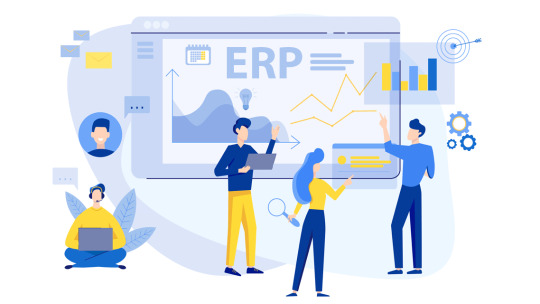
#application#development#software#software development#erpcloud#erp implementation#erp software#erp consultant#sap erp
2 notes
·
View notes
Text
How to Discover the ROI of ERP Implementation Projects?
Determining the return on investment (ROI) of an enterprise resource planning (ERP) system involves a process of analyzing the expected benefits against the costs of implementing and operating the system.
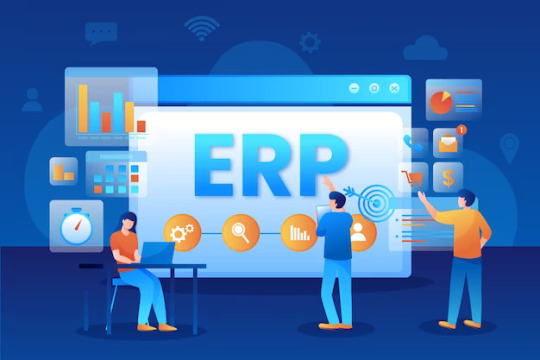
How to Calculate ROI of ERP Project?
Calculating the return on investment (ROI) for an enterprise resource planning (ERP) system involves comparing the expected benefits of the ERP implementation against its total cost.
Here are the steps to calculate ERP ROI:
Determine the total cost of the ERP implementation, including software licenses, hardware, consulting fees, employee training costs, and any other associated expenses.
Identify the expected benefits of the ERP implementation, such as increased efficiency, improved decision-making capabilities, reduced costs, increased productivity, and improved customer satisfaction.
Assign a monetary value to each expected benefit. For example, if the expected benefit is increased efficiency, calculate the potential cost savings associated with reducing manual efforts and eliminating duplicate data entry.
Estimate the time it will take to achieve each benefit and calculate the annual benefit for each benefit category.
Calculate the total expected annual benefit by adding up the annual benefits for each benefit category.
Subtract the total cost of the ERP implementation from the total expected annual benefit to get the total net benefit.
Divide the total net benefit by the total cost of the ERP implementation and multiply the result by 100 to get the ERP ROI percentage.
For example, if the total cost of the ERP implementation is $500,000 and the total expected annual benefit is $750,000, the total net benefit would be $250,000 ($750,000 - $500,000). The ERP ROI would be 50% ($250,000/$500,000 x 100). This means that for every dollar invested in the ERP system, the organization can expect to receive a return of 50 cents. It is important to note that the ROI calculation should take into account both short-term and long-term benefits and costs to get a comprehensive view of the ROI.
Determine the ROI of an ERP system
Here are the steps to determine the ROI of an ERP system:
Define the goals of the ERP system: Start by defining the goals of the ERP system, such as reducing operating costs, improving productivity, or enhancing customer service.
Identify the costs of the ERP system: Determine the total cost of the ERP system, including software licensing, hardware, consulting fees, employee training, and any other associated expenses.
Quantify the benefits of the ERP system: Identify the potential benefits of the ERP system, such as reduced operating costs, improved productivity, and increased revenue. Assign a monetary value to each benefit based on the potential financial impact on the organization.
Estimate the time to achieve benefits: Determine the time it will take to achieve each benefit and calculate the annual benefit for each benefit category.
Calculate the total expected annual benefit: Add up the annual benefits for each benefit category to get the total expected annual benefit.
Calculate the net present value (NPV) of the ERP system: Calculate the present value of the expected benefits minus the present value of the expected costs, using a discounted cash flow (DCF) analysis.
Calculate the ROI: Divide the NPV by the total cost of the ERP system and multiply by 100 to get the ROI percentage.
Conclusion:
ERP implementation can help you in many ways but without the calculation of Return on investment then you spend is totally lost. So make sure you have a good volume of return before investing in the ERP implementation. If you are planning to ERP implementation definitely you will conclude with the best oracle ERP cloud implementation, choose the service who has a year of expertise in oracle ERP implementation and the relevant field.
#erp implementation#erpcloud#erp software#erp implementation service#best erp implementation service#oraclecloudinfrastructure#oraclecloud#oracle implementation#erp modules#ERP software implementation
2 notes
·
View notes
Text
5 Important Features of ERP Payroll Management

Everything related to paying employees and filing employment taxes is handled by ERP Payroll management. They are set up to calculate earnings, withhold taxes and other deductions, print and deliver checks, and pay government employment taxes. They also maintain track of the number of hours worked. Payroll is frequently processed using software, which requires little input from businesses.
Employers must enter the wages and number of hours worked, and the software uses this data to compute automatically and deduct withholdings. The majority of payroll system software automatically updates itself when tax rules change and notifies employers when specific tax forms need to be filed.
What Exactly is an ERP Payroll System?
The procedure is automated by an ERP system, which also ensures that all employee data in the connected HR and Payroll modules is updated. The technology enables you to observe and extract the data with just a few keystrokes, and it is immediately visible at a look. This enables you to go deeper into data analytics, which can help you recognize trends and pinpoint issues, as well as facilitate quicker and better decision-making.
How Beneficial is it?
Any firm, whether it is a start-up company or an established major organization, needs to manage its payroll. The projection of the annual budget and the potential for future expansion will benefit from the correct payroll maintenance. Nowadays, the majority of firms look for HR and payroll management software instead of doing manual bookkeeping.
How Does ERP Payroll Work?
Every company or organization needs to manage and execute its payroll. There are several steps and exact calculations needed in order to pay each employee their periodic salary depending on their pay period and work hours. This is generally done in the HR department. When determining payroll, a number of additional factors are taken into consideration, including pay rate, taxes, and deductions. Therefore, accurate payroll processing guarantees that workers receive the required remuneration in accordance with their employment status and other laws.
ERP stands for "Enterprise Resource Planning," and it is a class of software or system used by businesses to schedule and oversee everyday operations, including supply chains, production, services, financials, and other procedures. Accounting and procurement, project management, customer relations, risk management, compliance, and supply chain operations are just a few tasks that enterprise resource planning software may perform to automate and streamline a company or organization.
A full suite of ERP Payroll management can be used to effectively communicate and integrate business processes to allow a flow of data between the applications, typically through shared databases either on-site/on-premise or in the cloud. Individual ERP Payroll management can offer software as a service (SaaS), while a complete suite of ERP systems can be used to provide SaaS.
5 Important Features of ERP Payroll Software
We'll go into detail about the most crucial components of a payroll software system in the section that follows.
1. Automation of Payroll
Having access to specialized payroll software that automates difficult, repetitive procedures related to payroll processing is crucial for efficient HR administration. Additionally, it must be simple to link with numerous third-party applications and business processes.
By using software to streamline payroll processing, payroll automation decreases the amount of human input.
The tasks of calculating tax withholdings, submitting taxes, and processing direct deposits are all made easier by payroll automation. Particularly during tax season, these solutions for finance teams can help save time and money.
2. Management of Operational Expenditures
To minimize overhead costs, one of the key drivers for the development of custom ERP software for payroll management systems. Because of this, it's crucial to check that your payroll software is created in a way that promotes economy of scale.
It is crucial to define the operational activities, or the main revenue-generating operations of the firm, as well as other activities that are not financing or investment activities, before estimating a company's operating expenses.
3. Salary/Benefits Management
It is an essential component that you must take into account while creating a unique ERP system for payroll management. As its name implies, it would assist various divisions throughout the firm in managing pay and benefits for employees.
Additionally, it would streamline procedures for managing allowances, including HRA, medical, project, and transportation allowances, among others.
4. Tax Planning
Another crucial function that any ERP software must have for payroll management is tax management. It assists you in keeping track of tax filing deadlines and helps you handle TDS calculations, employee remuneration, and tax filings. Additionally, it automatically verifies tax deposits and rebates and updates tax tables in real time.
The fact that high-level abilities are used to execute the payroll software application is its strongest feature. The application's most recent upgrades will provide all of the payroll software's newest capabilities when they are installed. You don't have to pay anything for manual mistakes using this system. The automatic payroll software, therefore, reduces the likelihood of human error to the absolute minimum.
The tax forms are already filled up using this feature's payroll information for the employee. Even with outsourced operations, third-party programs can keep the records refreshed every hour. Additionally, this function provides direct labour distribution paperwork, leave status, and quarterly audit reports.
5. Analytics and Reporting
Additionally, you need to have user-friendly dashboards, effective reporting tools, and cutting-edge analytics features in your ERP software for payroll management. Additionally, the use of MIS reporting tools in payroll software would aid in evaluating your business's current financial performance and economic health.
The ERP Payroll management system's features are crucial but challenging for enterprises. They simplify the lives of HR administrators and executives despite being complex. Research the various vendor offers thoroughly before applying for payroll management software.
FAQs Related To ERP Payroll Management
Q. What is ERP Payroll Management?
Ans. ERP software for managing payroll systems is used to oversee the entire payroll business process of an organization.
Q. What are the benefits of using ERP software for HR and payroll management?
Ans. No matter if the company is a small startup or a well-established major enterprise, payroll management is essential. The projection of the annual budget as well as the potential for future expansion will benefit from the correct payroll maintenance. Nowadays, the majority of businesses look for payroll system software instead of doing manual bookkeeping.
Q. How does ERP help in payroll?
Ans. An ERP system automates the updating process and guarantees that all employee data is up to date in the connected HR and Payroll modules. The technology enables you to view and extract information with just a few clicks, and it is readily available at a glance.
Conclusion
Techscope Technologies is an SAP Business One Partner in India, that specializes in SAP B1 implementation and payroll administration services. We take care of all payroll processing requirements, automate employee wage management, and ensure timely filing of income tax returns and payroll compliance. We have a list of satisfied clients who use our service and manage payroll using an easy panel developed by our professionals.
Source: https://techscope.co.in/5-features-of-erp-for-hr-and-payroll-management/
2 notes
·
View notes
Text

x
#CloudERP360#All in one#BusinessERP with Project#Account#HRM and#CRM#Cloud Revolute#CloudERP#ERPSolutions#ERP#ERPSystems#CloudERPSoftware#ERPs#ERP Implementation#EnterpriseResource PlanningSystem#ERPModules
3 notes
·
View notes
Text
#erpsystem#erpservices#erpsolutions#intelexel.in#manufacturing facility#manufacturingindustry#india#clouderp#erp implementation#erpcompanies
2 notes
·
View notes
Text
Efficiency Redefined: Optimizing Manufacturing with ERPNext Services By Sigzen.
In the world of manufacturing, finding ways to make things easier and more efficient is key. Imagine a tool that helps businesses manage everything from materials to production schedules with ease. That’s where ERPNext Manufacturing comes in. It’s like having a super-powered assistant that keeps everything running smoothly. With ERPNext Manufacturing, businesses can streamline their processes,…

View On WordPress
#Agile Manufacturing#Efficiency Redefined#ERP Implementation#ERP Integration#ERPNext#Inventory Management#Manufacturing#Optimizing Manufacturing#Process Optimization#Quality Control
0 notes
Text
Leading ERP Company in Chennai Offering Innovative Software Solutions

Experience business transformation with BatchMaster, the preferred ERP software company in Chennai. Our innovative solutions are crafted to meet the evolving needs of Chennai's diverse industries, providing a robust platform for growth and competitiveness.
0 notes
Link
In this blog, we will discuss the various ‘notifications’ or ‘alerts’ that can be displayed on the screen to the user because of some actions. There are different types or categories of notification in Odoo, Read more;
#odoo#odooimplementation#odoo erp#odoo services#odoodevelopment#odoonotifications#usernotification#erp development services#odoointegration#erp implementation#erp software#erpsolutions#erpsystem#erp applications
2 notes
·
View notes
Text
#retail pos solutions#erp for retail business#cloud retail erp software#retail pos software#retail pos system software#cloud it solutions#cloud based erp solutions#erp software solutions#business software solutions#software solutions company#Field Service Management Solution#erp for small business#cloud erp#erp implementation#erpcompany#erpdevelopment#canada#erpsolutions#sap erp#erp#erp software
2 notes
·
View notes
Text
#erp#erp software#erp system#erp implementation#erp solutions#cloud erp#erp integration#erpsolutions#erp for manufacturing#erp development company
0 notes
Text
9 out of 10 project sponsors don’t realize the time commitment an ERP project requires. Between meetings, walkthroughs, and training, ERP projects require additional investments from staff to ensure efforts stay on track and within budget. Shawn Windle outlines the 8 vital ERP milestones that help businesses work towards a successful go-live. What do you think?
For more expert advice on tackling an ERP implementation, follow the link below:
#erpconsulting#erpsoftware#erpimplementation#erpgolive
0 notes